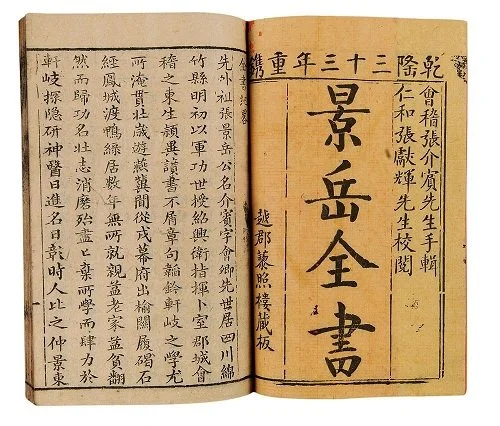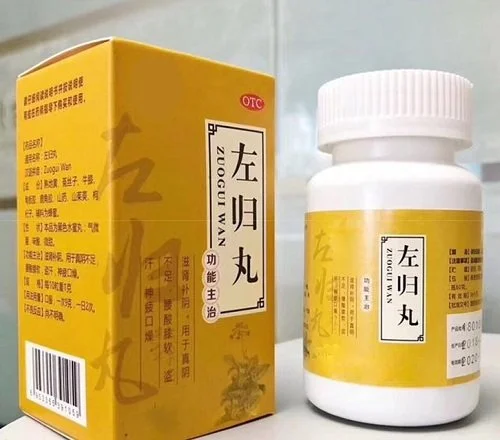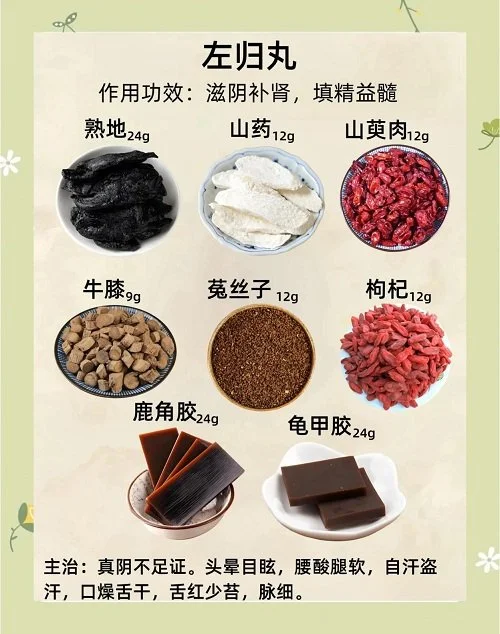Mechanism of Zuogui Wan in Regulating Chong and Ren Vessels for Treating Infertility
Zuogui Wan originates from Jingyue’s Complete Works (Jingyue Quanshu)·New Formulations in Eight Strategies, written by the Ming Dynasty physician Zhang Jiebin (Zhang Jingyue). It is a classic formula for nourishing kidney yin, specifically treating genuine yin deficiency. Its mechanism in regulating the Chong and Ren vessels, enriching blood, and promoting fertility can be analyzed as follows:
I. Core Mechanism: Replenishing Genuine Yin and Nourishing Chong & Ren Vessels
Kidney Yin-Tian Gui-Chong & Ren Axis
Traditional Chinese Medicine (TCM) holds that the kidneys store essence and govern reproduction. Kidney yin (genuine yin) is the material foundation of menstruation and pregnancy. When kidney yin is sufficient, Tian Gui (reproductive essence) is activated, the Chong and Ren vessels are filled with qi and blood, and the uterus is nourished, enabling conception. Zuogui Wan uses ingredients like Rehmannia glutinosa (Shu Di Huang), Dioscorea opposita (Shan Yao), and Lycium barbarum (Gou Qi Zi) to replenish genuine yin, fundamentally restoring reproductive physiological functions.Regulation of Chong & Ren Vessels
Chong Vessel (Thoroughfare Vessel): Known as the "Sea of Blood," it connects with the kidney meridian. Sufficient kidney yin ensures a full "Sea of Blood," leading to regular menstruation.
Ren Vessel (Conception Vessel): Governs the fetus. When kidney essence nourishes the Ren vessel, the uterus is adequately supported. Zuogui Wan uses gelatin-based substances like Tortoise Shell Glue (Gui Ban Jiao) and Deer Antler Glue (Lu Jiao Jiao) to directly tonify the extraordinary vessels and regulate Chong & Ren.
II. Formula Composition and Blood-Nourishing Fertility Effects
Zuogui Wan consists of Rehmannia glutinosa (Shu Di Huang), Dioscorea opposita (Shan Yao), Cornus officinalis (Shan Zhu Yu), Lycium barbarum (Gou Qi Zi), Cuscuta chinensis (Tu Si Zi), Deer Antler Glue (Lu Jiao Jiao), Tortoise Shell Glue (Gui Ban Jiao), and Cyathula officinalis (Chuan Niu Xi). Its compatibility features:
Shu Di Huang + Gui Ban Jiao: Strongly tonify genuine yin and replenish marrow, establishing the material basis for reproduction.
Lu Jiao Jiao + Tu Si Zi: Warm and moisten yang, embodying the principle of "seeking yin within yang" to promote yin-yang interaction and stimulate ovulation.
Shan Yao + Shan Zhu Yu + Gou Qi Zi: Nourish yin of the liver, spleen, and kidneys, addressing the shared origin of essence and blood to improve ovarian function.
Chuan Niu Xi: Directs herbs downward to the uterus, with mild blood-activating properties to prevent stagnation from excessive supplementation.
III. Modern Medical Perspective on Fertility Enhancement
Improving Ovarian Reserve: Ingredients like Shu Di Huang and Gou Qi Zi regulate the hypothalamic-pituitary-ovarian (HPO) axis, promoting follicular development.
Enhancing Endometrial Receptivity: Gui Ban Jiao and Lu Jiao Jiao are rich in collagen and trace elements, potentially supporting endometrial growth and implantation.
Anti-Apoptotic & Antioxidant Effects: Shan Zhu Yu and Tu Si Zi exhibit antioxidant properties, protecting oocyte quality.
IV. Clinical Application Guidelines
Indications: Best for kidney yin deficiency-type infertility, presenting with scanty red menses, sore lower back, night sweats, red tongue with little coating.
Contraindications: Not suitable for spleen deficiency with dampness or phlegm-stasis blockage (e.g., obesity, PCOS with phlegm-dampness).
Modifications: Often combined with Salvia miltiorrhiza (Dan Shen) and Angelica sinensis (Dang Gui) to activate blood and regulate menstruation, or Placenta hominis (Zi He Che) to enhance blood and essence replenishment.
Conclusion
Zuogui Wan employs a chain-like mechanism of "nourishing kidney essence → replenishing Chong & Ren → regulating the uterus" to fundamentally improve reproductive endocrine conditions. It exemplifies the TCM principle: "To conceive, first regulate menstruation; to regulate menstruation, first tonify the kidneys." Accurate syndrome differentiation and cycle-phase-based dosing are essential for clinical efficacy.




